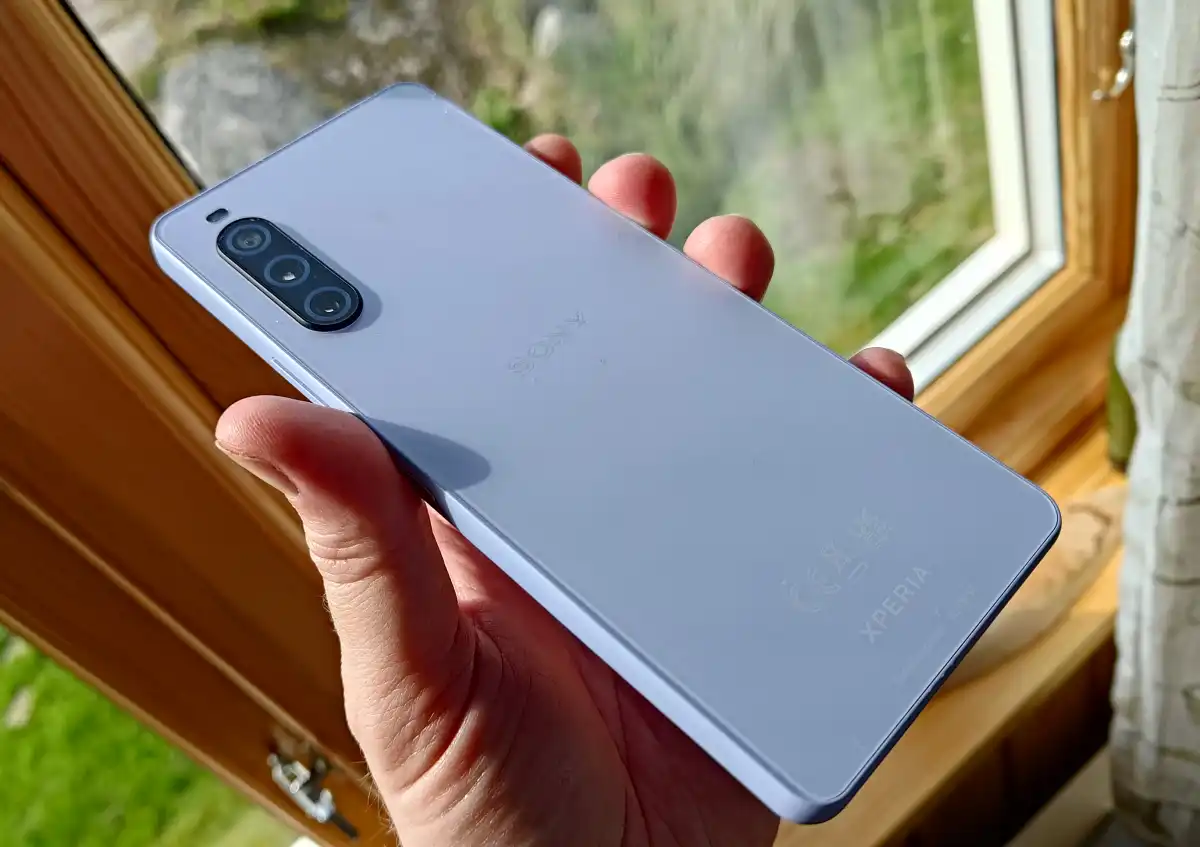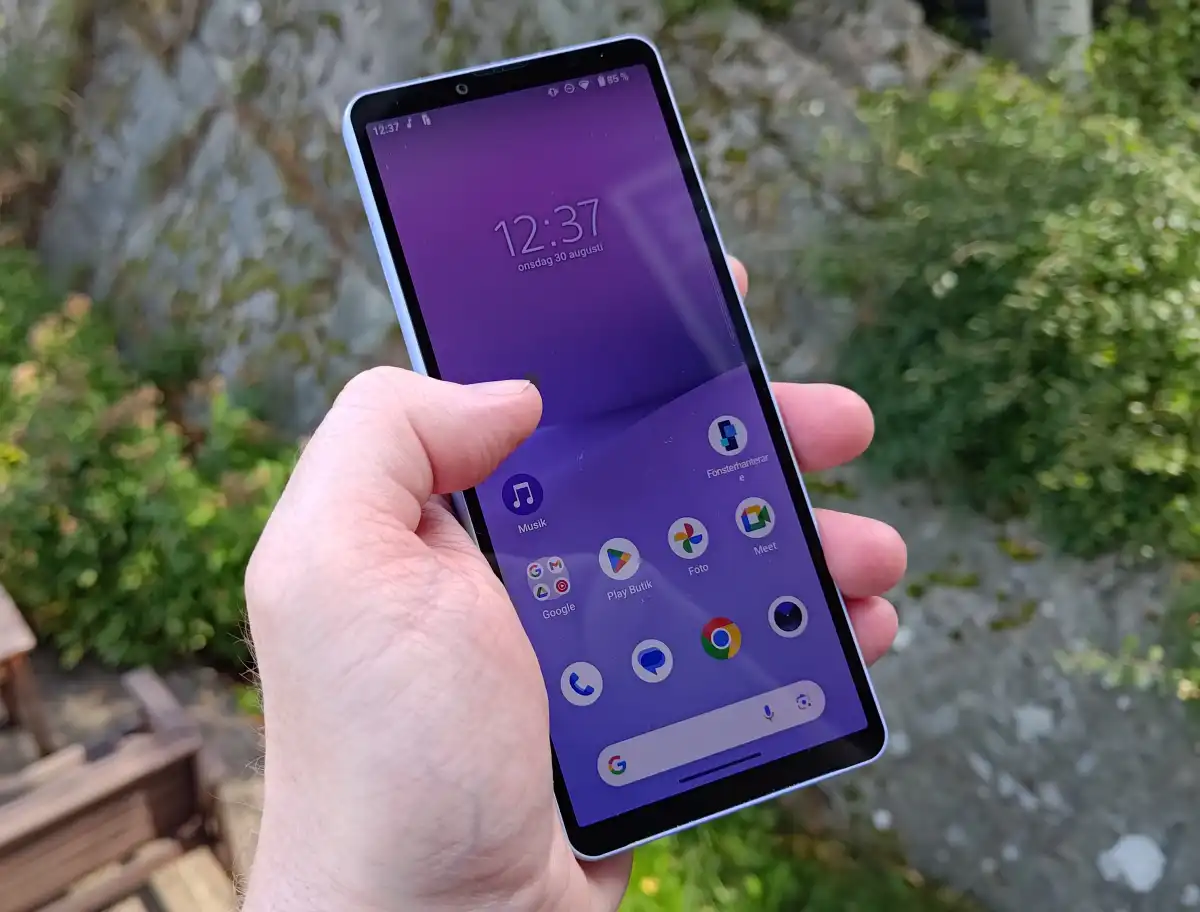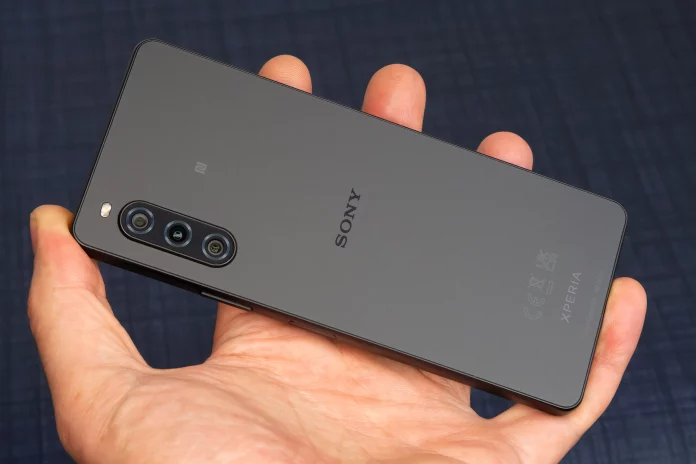Sony does not release many mobile phones every year, but rather three in particular. The flagship Xperia 1, the small Xperia 5, and the similarly compact mid-range Xperia 10. Now I’ve tried this year’s Xperia 10, which has a long, thin OLED screen and a suggested retail price of £399. Despite a slew of appealing features, I’m not certain it’s worth the money.
One, five, and ten have all looked the same since the series’ initial generation in 2019, and they are now on generation five. Sony prefers Roman numerals and insists on the pronunciation “mark five.” They may argue all they want, but a five is a five, and I don’t see any “mark” so I won’t say.
You can buy it via Sony as well as stores like as Amazon, AO, Ebuyer, and Very. It is not officially accessible in the United States at the time of writing, although it is available on Amazon.
Design & Build
The Xperia 10 V features an incredibly slender design that is comfortable to hold. It is the same width as the compact Asus Zenfone 10, but a tenth of a millimetre narrower and nearly a millimetre thinner. More if you add the huge camera pucks on the rear of the Zenphone. However, it boasts a 6.1-inch extended screen with a 21:9 aspect ratio, as well as additional centimetres above and below the screen to fit the selfie camera, speakers, and other circuitry.

This extends it by about a millimetre and puts it at danger of protruding from certain tiny pockets. There are several advantages to having a narrow breadth. With one thumb, I can easily reach the whole width of the phone, and Sony’s Android UI, like Asus’s, is ideally suited to one-handed navigation.
You don’t have to reach for the top to swipe the notification and quick menu, and it’s simple to enable a one-handed mode that reduces the height of the active screen. Sony’s UI also performs other things really well. The split-screen management is smooth and clever, and you receive a number of smart tools to help you save energy.

The gently curved frame and flat back are made of matt plastic that is both robust and comfortable to hold. The front is totally flat and constructed of tough Gorilla Glass Victus. In terms of style and functionality, the phone boasts several other classic Xperia characteristics, such as an analogue headphone socket on the top and Sony’s customary SIM and SD card slot that you can take out with your fingernail. It lacks a dual-sim slot, however you can enable eSIM on your phone.
Nonetheless, it has a totally waterproof structure and is rated IP65, which means it can resist cleaning under a faucet, and IP68, which means it may be immersed in water for up to 30 minutes. It’s not a dive vehicle, but it can endure a puddle, a ditch, or a bathtub. Water resistance of any type is desirable, and the Xperia 10 V exceeds most other mid-range phones that are either IP68 or IP65, or have none at all.

Screen & Audio
The 6.1in OLED screen delivers exceptional contrast and rich, vibrant colors while maintaining high color accuracy in both the standard DCI P3-rated mode and an Original mode that matches sRGB. The normal setting, on the other hand, is originally set to an exceptionally cool white balance, although this may be readily modified manually.
For automatic maximum brightness and HDR display, the screen’s brightness is officially up to 1,000 nits. On an all-white screen, I get slightly under 700 nits in standard mode at best, and since the sun is shining, I can also test peak brightness in automated mode, which delivers on Sony’s claim. It is acceptable to use the screen outside on a clear day. Sony has also verified that the Xperia 10 V has the necessary certifications for most major streaming providers.
However, in the mid-price category, a nice vintage screen is not uncommon, and many are better than this one, with even higher brightness and, crucially, higher frequency. I’m locked to 60Hz here, which is an unpleasant experience after being used to 90- and 120Hz screens. Even most low-cost smartphones now have 90Hz displays, so perhaps it’s time for Sony to keep up?
The brand Sony is normally synonymous with superb sound, and with the correct headphones, this is certainly true. When connected analoguely, they’re fed by a decent DAC, and you receive support for both wired and wireless High Resolution Audio, as well as DSEE Ultimate, a technique that utilizes AI to scale up CD-quality audio or down to a more High Res-like experience. But, to be honest, I don’t see any change, and it also consumes more battery power to operate.
Anything other than speech is less pleasurable to listen to through the built-in speakers, as they lack practically all bass and lose a lot of information in the treble. The forward-facing pieces at each edge help with stereo dispersion, but that’s the only thing I can say. Sony should be able to do better.

Cameras
The Xperia 10 IV, like its predecessor, has a full triple camera system, with a wide-angle, optical zoom, and a primary camera with a focal length in between, as well as a smart zoom feature in the camera app that allows you to zoom all the way from 0.6x to 10x hybrid zoom. When it switches sensors, there is some hopping in the viewfinder, but it is not bothersome. You may also use the app’s handy mode to display the portions at various preset zoom levels.
Unfortunately, the quality variation between the various sensors is enormous. The main camera has a big half-inch 48-megapixel Sony IMX582 sensor with optical image stabilisation and quad bayer pixel binning, which produces clear 12-megapixel photos with high dynamics and detail. Colors are slightly subdued, however this is a Sony trait inherited from their color management in system cameras. It has a more natural rendering than an aggressive and striking representation.
When shooting in low-light conditions, such as at night or inside, the camera automatically switches to long exposure mode, which produces acceptable results with a steady hand. Quick photographs are still feasible because you don’t have to hold the camera motionless for the whole number of seconds indicated by the app, but you lose a lot of color control and dynamics. When it becomes a little dark, autofocus becomes jumpy, sluggish, and patient.
The other two sensors have eight megapixels apiece and are substantially lower in size. This implies that hybrid zooms of more than 2x soon blur and don’t have nearly the same capacity to snap images in low light as the primary camera. Where other cameras can pick up colors, it rapidly turns pitch dark, noisy, and mottled. The selfie camera uses the same eight-megapixel sensor and has similar features.

Performance & Battery Life
A more contemporary and speedier system circuit may have aided the Xperia 10 V. It is powered by the Snapdragon 695, which was released in 2021 and has strong multitasking capabilities but not very high peak performance. Individually taxing processing processes drive the phone to its knees. Consider some camera operations.
Even simple tasks like generating a complicated web page might create micro-pauses. It’s also not a phone for demanding games; Candy Crush and Roblox can suffice, but you can’t be fussy with continuously good frame rates. A cell phone that should be the second best a manufacturer has to offer and costs close to 5000 SEK should deliver a little more.
Even the cell phone’s vibration motor seems like it belongs in a low-cost gadget. There is no tactile sensation, only an unpleasant unsteady hum that I must fast turn off to prevent going insane.
The Xperia 10 V has an equally big list of advantages and disadvantages, so it’s up to you to decide which features are significant enough to entice you to buy. I can’t recommend it outright since there’s a significant probability that some crucial aspect will fall short, even if it succeeds in others.
This, along with power-saving circuitry and a big 5,000mAh battery, gives the Xperia 10 V one of the finest battery lives I’ve seen. I can stream video at maximum brightness for over 24 hours and surf, email, and use other mixed applications at medium brightness for around the same length of time.
Unfortunately, I cannot say the same with the battery charge. Sony does not specify how much power is supported, and no charger is given. The phone will only support Quickcharge and USB Power Delivery, according to the sole official source. I got the same results with a 30 Watt and a 65 Watt USB-PD charger: 35% charged in half an hour and over two hours for a full battery.
Sony Xperia 10 V benchmarks
- Geekbench 6: 2,076 points
- Geekbench 6 single core: 858 points
- Geekbench 6 compute: 1,377 points
- GFX Bench Aztec OpenGL High: 11 fps
- GFX Bench Manhattan: 40 fps
- Storage, read: 477.22 MB/s
- Storage, write: 369.46 MB/s
This review first appeared on M3.
Specifications
- System chip: Qualcomm Snapdragon 695
- Processor: 2 Kryo 660 Gold 2.2 GHz + 6 Kryo 660 Silver 1.8 GHz
- Graphics: Adreno 619
- Memory: 6 GB
- Storage: 128 GB, micro sd slot
- Screen: 6.1 inch oled, 1080×2520 pixels, 60 Hz
- Cameras: 48 megapixel + 8 megapixel wide angle + 8 megapixel 2x telephoto with led rear, 8 megapixel front
- Connections: Usb 2 type c
- Communications: 2g, 3g, 4g, 5g, wifi 5, bluetooth 5.1, agps, galileo, nfc
- Operating system: Android 13 with Xperia UX, 2 years of updates
- Other: Esim, side fingerprint scanner, waterproof (IP65/68)
- Battery: 5,000 mAh, 25 hrs video streaming (max brightness), 19 hrs 20 min mixed use (Pcmark Work, 200 cd/m2 brightness), about 33 hrs calls (4g)
- Battery charging: usb 21 W (pd, qc), 0-18% in 15 min, 0-35% in 30 min, charger not included.
- Size: 15.5 x 6.8 x 0.8 cm
- Weight: 159 grams


